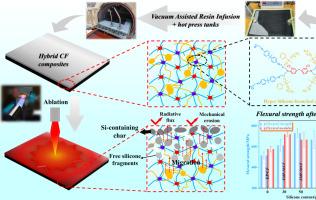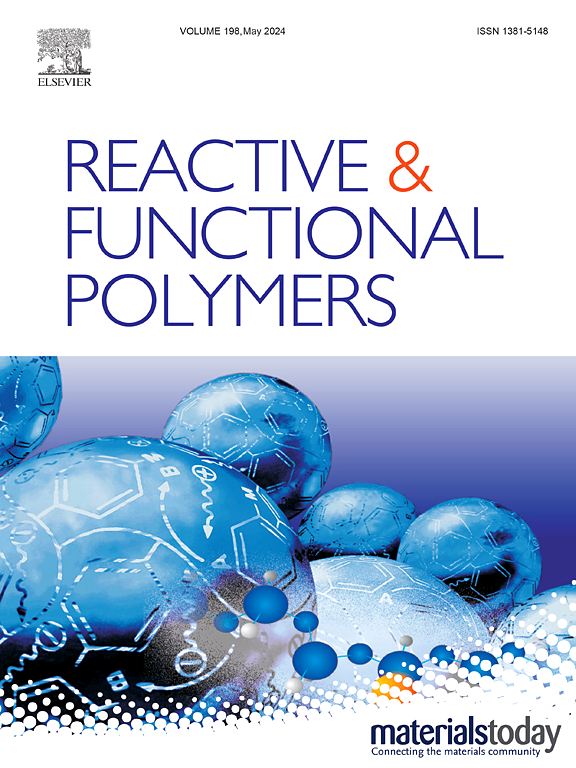In situ construction of silicon-containing carbon layer by hyper silicone-branched structure endows epoxy/carbon fiber composites with high strength and ablation resistance
Abstract
Epoxy/carbon fiber composites are widely used as structural materials in the aerospace field. Improving the ablation resistance of epoxy/carbon fiber composites is of great importance for the fabrication of highly integrated structural-thermal protection materials. In this study, a silicon-modified epoxy/carbon fiber composite was prepared by a hyperbranched structural design approach. By taking advantage of the excellent antioxidant properties of the silicone compounds generated by the pyrolysis of hyperbranched silicone structures, a dense char layer is rapidly constructed on the surface of composites. The characterization and thermal pyrolysis behavior of hyperbranched silicone-modified epoxy resins are analyzed. In the simulated aerodynamic environment of a high-speed vehicle (where the heat flow is 160 kW/m2), compared with epoxy/CF composites, the value of the mass loss rate of modified composites underwent a reduction exceeding 80%, accompanied by a 60.3 °C decrease in the maximum back-surface temperature. More significantly, the post-ablation mechanical properties were evaluated through a three-point bending test, revealing that the modified composites retained over 95% of their initial flexural strength and modulus after simulated pneumatic heating. This approach offers a new approach to manufacture structurally simple, integrated structure-thermal protection systems.


 求助内容:
求助内容: 应助结果提醒方式:
应助结果提醒方式:


